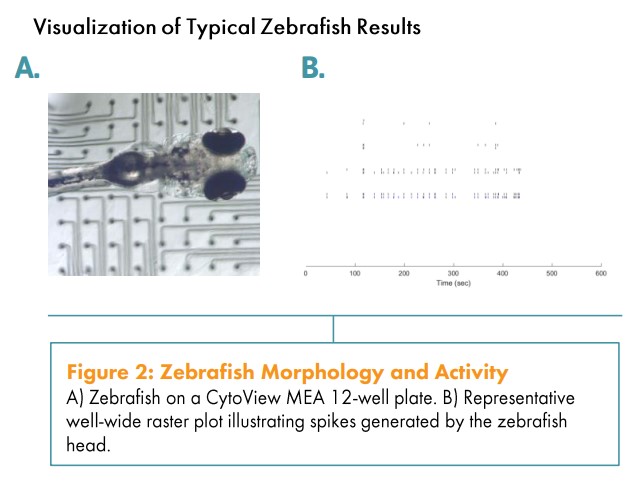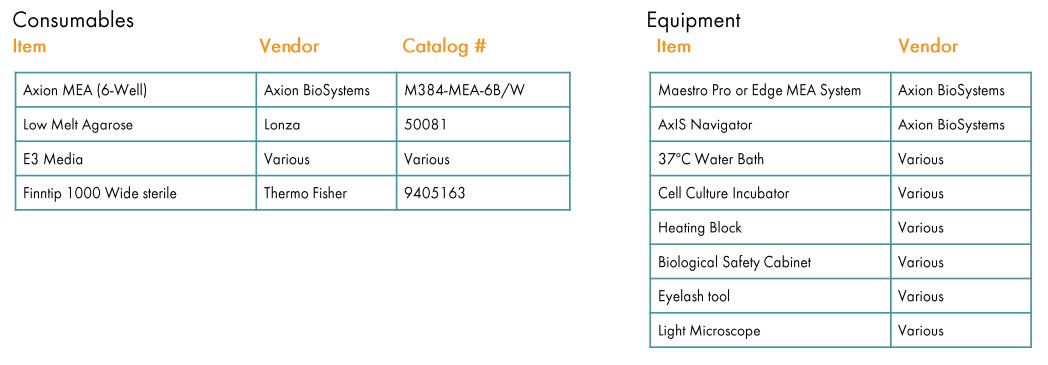
Prepare the MEA plate
-
Dissolve 1.5% Low Melt Agarose in E3 Media in a small bottle and boil.
Note: E3 media is composed of 4.96 mM NaCl, 174.38 mM KCI, 333.39 mM CaCl2, and 162.29 mM MgSO4 x7H2O. -
Add a 100 uL drop of agarose to one well in MEA plate as control well.
-
Drop agarose on petri dish and allow to cool between 45 sec to 1 min, check temperature by touching bottom of dish or hovering finger over agarose.
Culturing and Plating Zebrafish
-
Once agarose is cooled enough but has not started to solidify, quickly drop larvae into agarose preventing addition of solution.
-
Suck up larvae in agarose and drop into well, fill agarose to lip of electrode area.
-
Invert larvae and gently push to bottom of well, flattening body and head on top of electrodes and holding larvae down until agarose has solidified.
Note: Proper orientation of the larva can be useful to best achieve array coverage of the desired feature, e.g. head, spinal cord, etc. -
Once agarose has solidified, start recording immediately.
-
Spontaneous recordings are taken over a ten-minute period, heater set to 30° C.
-
Spontaneous activity will appear after roughly 3-5 minutes, may have to do with seal.
-
After recording, place plate back under microscope and record electrodes that touch only the head region.
Note: Discard recording if larvae has moved/rotated. -
Remove larvae with squirt water bottle into cull bucket that has ice so larvae are immediately sacrificed.
-
Analyze data on specific electrodes including spike rate, burst activity, and network activity.
Recording activity notes
The Maestro is pre-set to a standard 37°C, yet this is higher than the typical temperature used for Zebrafish (28.5°C). The environment control panel in AxIS can be used to lower the temperature or turn off the heating plate altogether. For Maestro Edge and Pro systems, the door can be left open to help lower the ambient temperature. After the organism is plated, the neural real-time configuration is the preferred setting for acquiring data.

With regards to zebrafish, previous users have attempted to paralyze the organism to prevent it from using alpha bungarotoxin, a neuromuscular junction inhibitor that prevents skeletal muscle contraction via inhibition of acetylcholine receptors.


Required materials




